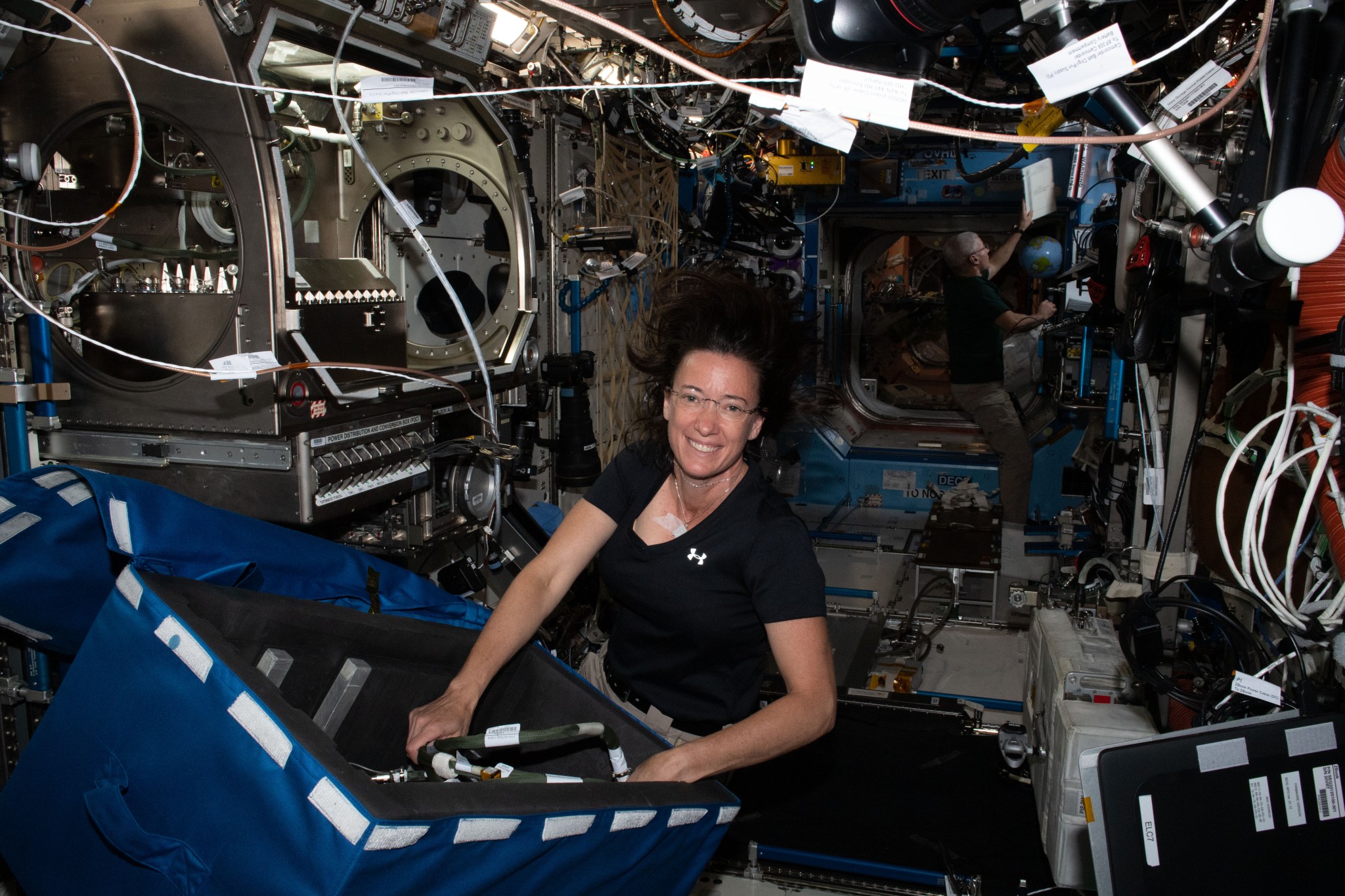Science Integration

Contents
Introduction
Johnson Space Center (JSC) has a long-standing history in scientific research to support exploration missions. Teams at JSC combine scientific and engineering expertise to advance knowledge of potential exploration destinations, to integrate terrestrial and planetary science research, to extend extraterrestrial materials curation, to conduct human research and to promote success for operational spacecraft by mitigating risk. Our scientists are members of mission teams, constructing and operating spacecraft instruments and sensors as well as providing applied science services to missions. We provide scientific expertise in the definition of mission objectives, spacecraft designs, suit and tool designs and operating protocols. We are Agency leaders in the formulation and operation of robotic and human exploration missions, making a sustainable presence beyond Earth possible. Explore our capabilities below and join us in advancing scientific research and planetary exploration.
Capabilities
NASA Airborne Science Program
Overview | The Gulfstream (GIII) aircraft supports the NASA Airborne Science Program and provides a reliable, configurable, and comfortable airborne platform to the earth science community and other customers to support scientific research and advanced technology development and testing worldwide.
Details |
- An integrated process to support payload design and integration, test readiness, and mission execution
- The aircraft can be modified to meet customer needs
- The cabin can be configured with standard equipment racks and operator consoles
- Up to 15 mission crew/passengers can be accommodated depending on internal cabin configuration
- An external pod for radar, lidar, or other instrumentation is available
Cold Stowage
Overview | The Cold Stowage team is part of the International Space Station (ISS) Program. JSC manages the operation, support and integration tasks provided by Jacobs Technology and the University of Alabama Birmingham (UAB). Cold stowage provides controlled environments to meet temperature requirements during ascent, on-orbit operations, and return, in relation to ISS payload science.
Details | NASA’s vision for humans pursuing deep space flight involves the collection of science in low earth orbit aboard the ISS. As a service to the science community, JSC has developed hardware and processes to preserve collected sincere on the ISS and transfer it safely back to the Principal Investigators. These active and passive cold stowage systems include an array of freezers, refrigerators, and incubators. JSC’s Cold Stowage Lab can perform hold tests, fit checks, and thermal tests by request. Equipment in the lab allows the team to test articles at temperatures ranging between -196° C to +200° C. The team also provides support to payload developers through launch, on-orbit operations, and landing.
Exploration Mission Science
Overview | NASA JSC Astromaterials and Exploration Science Division (ARES) constructs and operates spacecraft, instrumentation, and sensors as team members of various missions.
Details | We provide planetary expertise in the definition of mission objectives, spacecraft designs, suit and tool designs and operating protocols. We provide applied science services to missions, including remote sensing, imagery science and analysis, orbital debris environment predictions, spacecraft debris risk assessments and spacecraft shielding. Our unique integrated team of scientists and engineers also provide mission enabling services. We are NASA’s designated team for characterizing the orbital debris environment through space-based payloads, ground-based observatories and radar facilities, laboratory studies and modeling. We use our environmental knowledge to estimate risk to spacecraft and to guide vehicle design to mitigate risk, taking advantage of our in-house development of shielding technology.
Science Operations
Overview | NASA JSC Astromaterials and Exploration Research Division (ARES) pioneered science operations for human missions through support to the Apollo missions, which has been leveraged to all subsequent crewed missions, including International Space Station (ISS) missions and Orion missions.
Details | The Astromaterials and Exploration Science Division (ARES) integrates science operations of Earth sensors onboard the International Space Station and leads the acquisition of Earth imagery by astronauts. We populate Mars mission teams, including the Curiosity, Opportunity, and Perseverance rovers. We also integrate into science teams for asteroid missions including Origin’s Spectral Interpretation Resource Identification Security Regolith Explorer (OSIRIS-REx) and Hayabusa2. We lead the development of sensors to enhance the scientific return of planetary exploration, leveraging the International Space Station as a proving ground as needed.
































